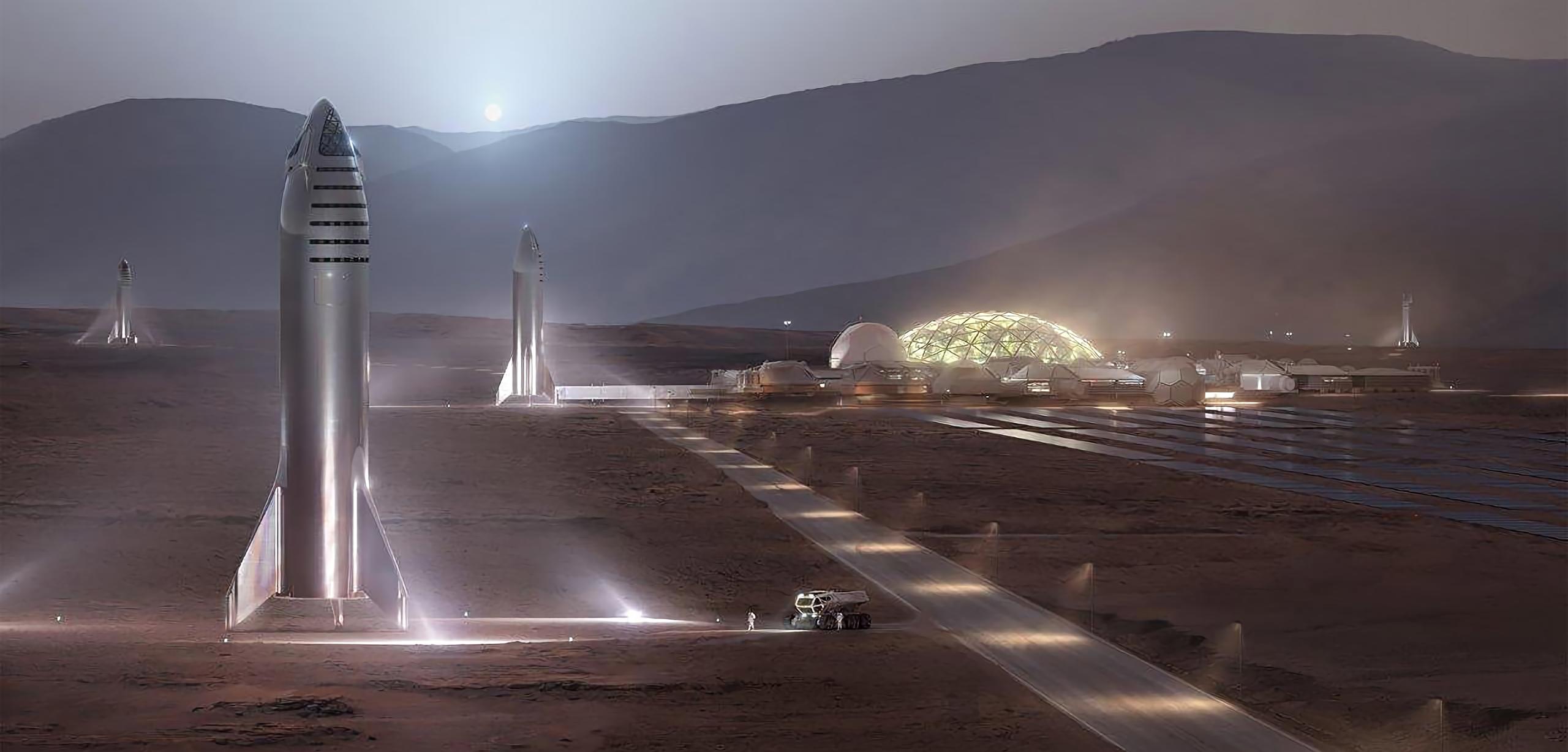
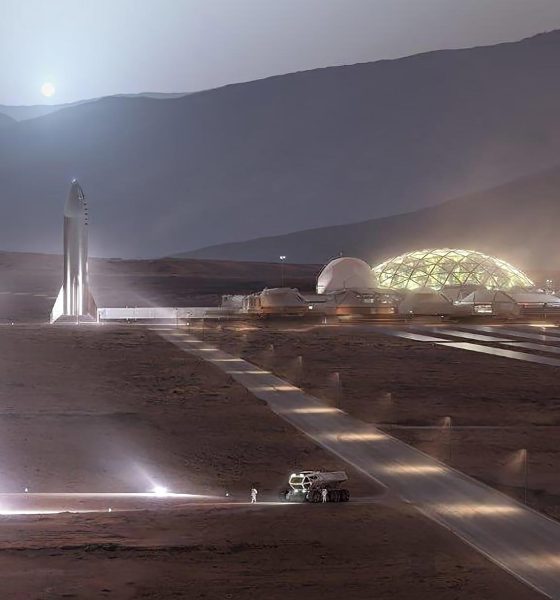
News
SpaceX acquires new photos of Starship landing sites with Mars-orbiting NASA satellite
SpaceX has reaffirmed its prioritization of the Arcadia Planitia – a low Martian plain – and adjacent areas as some of the most promising locations for early Starship landings, tasking a NASA satellite to gather updated photos of six potential landing sites.
First discovered and analyzed by author Robert Zimmerman on August 28th, SpaceX requested the landing site prospecting images from the University of Arizona, tasked with operating NASA’s JPL-built HiRISE spacecraft. Back before Red Dragon’s 2017 cancellation, SpaceX began the process of landing site analysis, a canvassing that ultimately settled on four possible locations, of which the Arcadia Planitia was viewed as most promising.
After at least 2.5 years of research, SpaceX thus appears to be confidently settling on one particular region of Mars for its first Starship landing(s) on the Red Planet. Located in Mars’ mid-northern latitudes, Arcadia Planitia – like its Latin namesake suggests – is a region of plains, specifically low plains per International Astronomical Union (IAU) standards. It has been described by NASA as “one of the few regions [of Mars] where abundant shallow ice is present at relatively low latitude”, desirable for an array of reasons.

Arcadia Planitia takes up much of the left-hand side of this spectacular 2017 panorama, stitched together from Mars Express images by Justin Cowart. On the scale of Martian spectacle, one could be forgiven for perceiving Arcadia as boring. In fact, that’s one of the main reasons SpaceX is interested in it – just as Arcadia looks rather featureless from orbit, it is relatively bereft of the boulder fields common in many other regions of Mars, translating into much less obstacle avoidance during landing.
Additionally, Arcadia Planitia is indeed a region of low plains – one of the lowest regions (relative to the mean surface level) on Mars. This translates into much higher atmospheric pressure (i.e. a thicker atmosphere), insulating the region from some of the extremes of Martian weather, as does its relative adjacency to the planet’s equator. Simultaneously, this wealth of atmosphere enables more efficient spacecraft landings. Per a September 2018 update, Starship is set to rely heavily on a series of atmospheric maneuvers to slow down, a strategy that significantly cuts the amount of propellant the spacecraft must use to land softly on Mars (and Earth!).
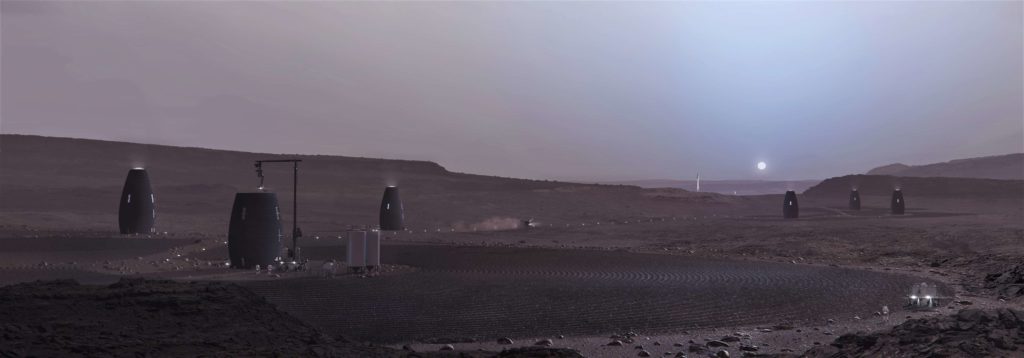
To tally: Arcadia Planitia offers (somewhat) warmer summers and winters due to its latitude, augmented by a low relative altitude that insulates the region from weather extremes and enables more efficient propulsive spacecraft landings.
However, perhaps more important than any of the above features is the fact that Arcadia Planitia is host to a vast wealth of water ice resources, ranging from frozen aquifers to glaciers in the adjacent Erebus Montes mountains. Of central importance to SpaceX’s strategy of affordably colonizing and exploring Mars is the decision to produce return propellant – needed for Starships to return to Earth – on Mars, known as in-situ resource utilization (ISRU). Starship’s use of methane and oxygen is almost entirely a result of this – methane is far easier to work with than hydrogen and can also be easily produced from water, as can oxygen.
The cleaner and more accessible the Martian water ice is, the easier it will be for SpaceX robots or astronauts to set up a propellant plant on Mars. Additionally, clean water is extremely expensive to transport in space, and a near-infinite supply of ice-derived water would be extremely useful for all sorts of human outpost needs.
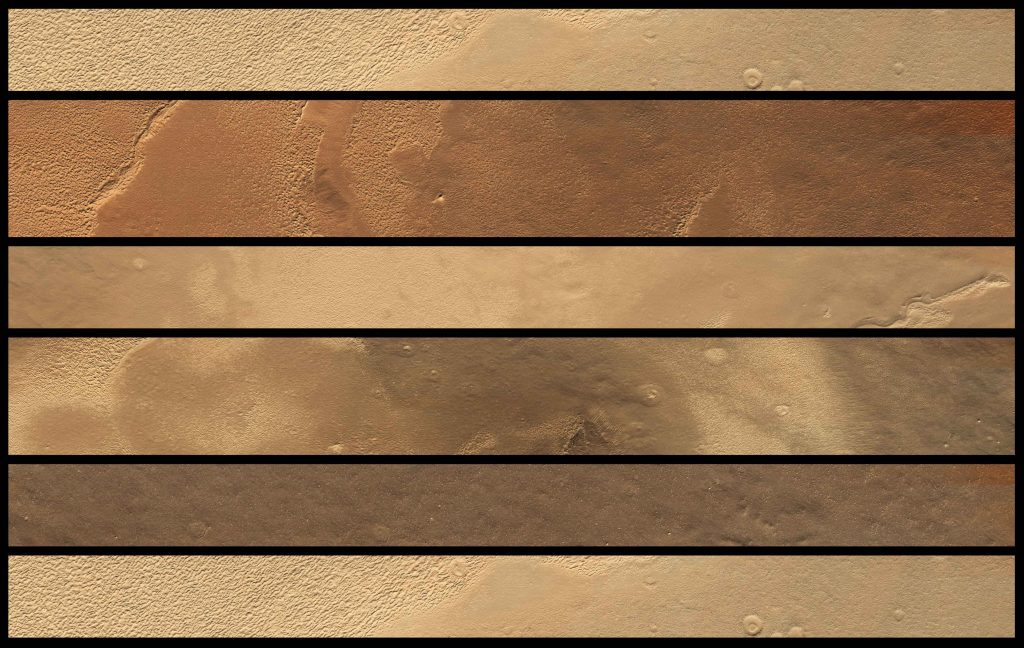
SpaceX CEO Elon Musk believes that the company could be ready for Starship’s first uncrewed Mars launch as early as 2020 or 2022 Hohmann transfer opportunities, windows that permit a uniquely efficient journey from Earth to Mars.
Check out Teslarati’s Marketplace! We offer Tesla accessories, including for the Tesla Cybertruck and Tesla Model 3.

News
Tesla gamifies Supercharging with new ‘Charging Passport’
It will also include things like badges for special charging spots, among other metrics that will show all of the different places people have traveled to plug in for range.
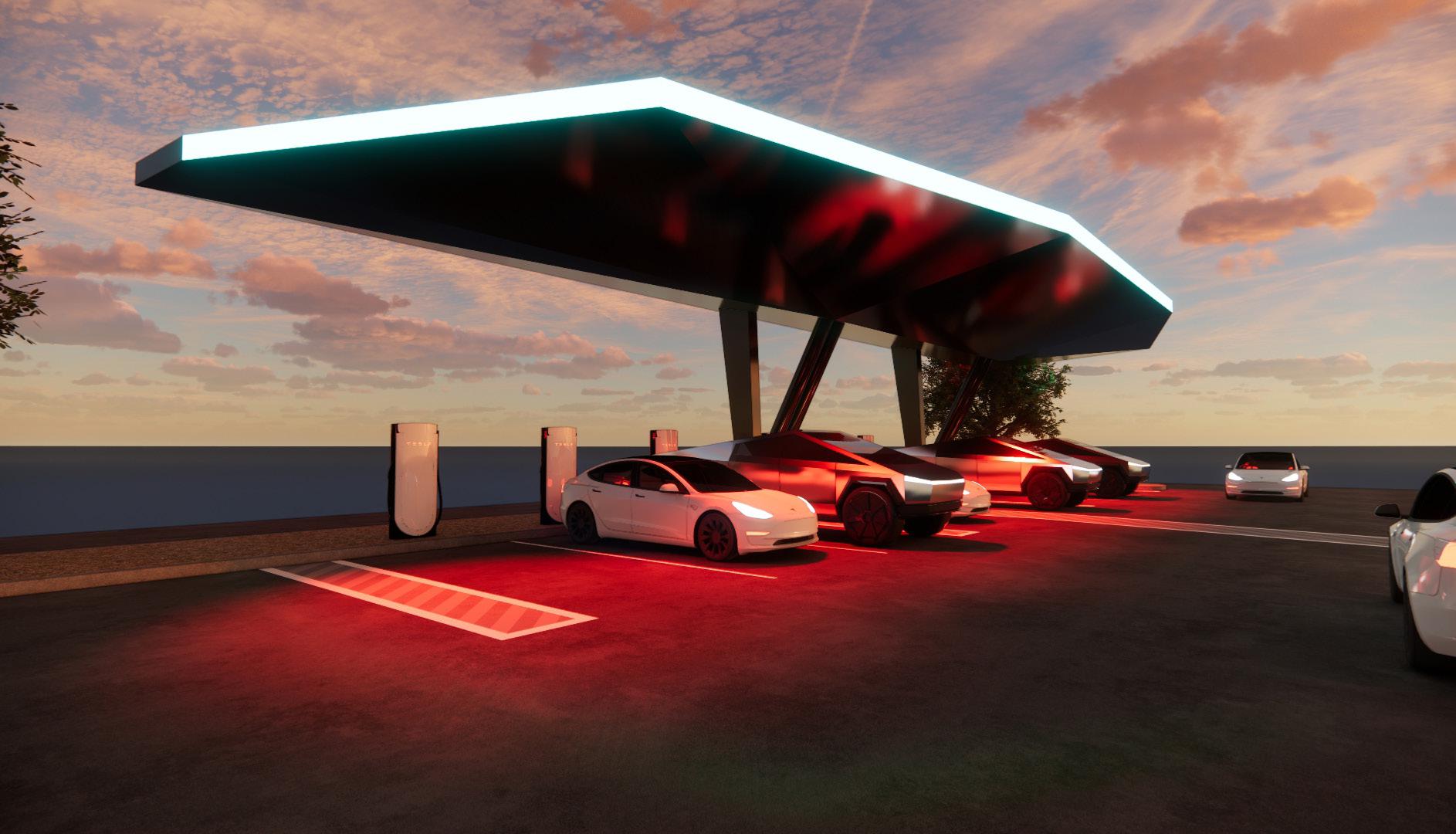
Tesla is gamifying its Supercharging experience by offering a new “Charging Passport,” hoping to add a new layer to the ownership experience.
While it is not part of the Holiday Update, it is rolling out around the same time and offers a handful of cool new features.
Tesla’s Charging Passport will be available within the smartphone app and will give a yearly summary of your charging experience, helping encapsulate your travel for that year.
It will also include things like badges for special charging spots, among other metrics that will show all of the different places people have traveled to plug in for range.
Tesla has just introduced “Charging Passport,” a new yearly summary of your charging.
• Charging badges: Iconic Charging badge (for visiting places like the Tesla Diner, Oasis Supercharger, etc), Explorer badge, green saver badge, etc.
• Total unique Superchargers visited
•… pic.twitter.com/c1DHTWXpj7— Sawyer Merritt (@SawyerMerritt) December 8, 2025
Tesla will include the following metrics within the new Charging Passport option within the Tesla app:
- Charging badges: Iconic charging badges for visiting places like the Tesla Diner, Oasis Supercharger, etc., Explorer Badge, and more
- Total Unique Superchargers Visited
- Total Charging Sessions
- Total Miles Added during Charging Sessions
- Top Charging Day
- Longest Trip
- Favorite Charging Locations
This will give people a unique way to see their travels throughout the year, and although it is not necessarily something that is needed or adds any genuine value, it is something that many owners will like to look back on. After all, things like Spotify Wrapped and Apple Music Replay have been a great way for people to see what music they listened to throughout the year.
This is essentially Tesla’s version of that.
With a handful of unique Superchargers already active, Tesla is also building some new ones, like a UFO-inspired location in New Mexico, near Roswell.
Tesla is building a new UFO-inspired Supercharger in the heart of Alien country
News
Tesla launches its coolest gift idea ever just a few weeks after it was announced
“Gift one month of Full Self-Driving (Supervised), which allows the vehicle to drive itself almost anywhere with minimal intervention.”

Tesla has launched its coolest gift idea ever, just a few weeks after it was announced.
Tesla is now giving owners the opportunity to gift Full Self-Driving for one month to friends or family through a new gifting program that was suggested to the company last month.
The program will enable people to send a fellow Tesla owner one month of the company’s semi-autonomous driving software, helping them to experience the Full Self-Driving suite and potentially help Tesla gain them as a subscriber of the program, or even an outright purchase.
Tesla is going to allow owners to purchase an FSD Subscription for another owner for different month options
You’ll be able to gift FSD to someone! https://t.co/V29dhf5URj
— TESLARATI (@Teslarati) November 3, 2025
Tesla has officially launched the program on its Shop. Sending one month of Full Self-Driving costs $112:
“Gift one month of Full Self-Driving (Supervised), which allows the vehicle to drive itself almost anywhere with minimal intervention. All sales are final. Can only be purchased and redeemed in the U.S. This gift card is valued at $112.00 and is intended to cover the price of one month of FSD (Supervised), including up to 13% sales tax. It is not guaranteed to cover the full monthly price if pricing or tax rates change. This gift card can be stored in Tesla Wallet and redeemed toward FSD (Supervised) or any other Tesla product or service that accepts gift card payments.”
Tesla has done a great job of expanding Full Self-Driving access over the past few years, especially by offering things like the Subscription program, free trials through referrals, and now this gift card program.
Gifting Full Self-Driving is another iteration of Tesla’s “butts in seats” strategy, which is its belief that it can flip consumers to its vehicles and products by simply letting people experience them.
There is also a reason behind pushing Full Self-Driving so hard, and it has to do with CEO Elon Musk’s compensation package. One tranche requires Musk to achieve a certain number of active paid Full Self-Driving subscriptions.
More people who try the suite are likely to pay for it over the long term.
News
Tesla expands Robotaxi app access once again, this time on a global scale
Tesla said recently it plans to launch Robotaxi in Miami, Houston, Las Vegas, Phoenix, and Dallas.
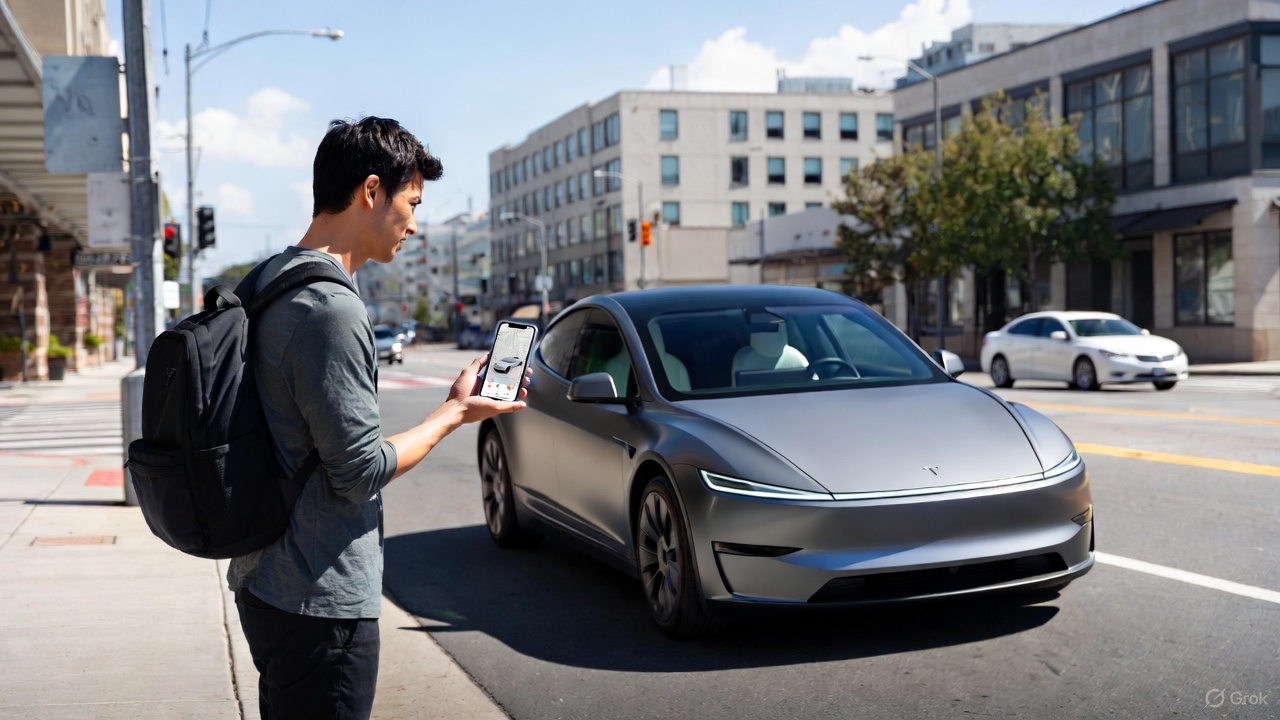
Tesla has expanded Robotaxi app access once again, but this time, it’s on a much broader scale as the company is offering the opportunity for those outside of North America to download the app.
Tesla Robotaxi is the company’s early-stage ride-hailing platform that is active in Texas, California, and Arizona, with more expansion within the United States planned for the near future.
Tesla said recently it plans to launch Robotaxi in Miami, Houston, Las Vegas, Phoenix, and Dallas.
The platform has massive potential, and Tesla is leaning on it to be a major contributor to even more disruption in the passenger transportation industry. So far, it has driven over 550,000 miles in total, with the vast majority of this coming from the Bay Area and Austin.
First Look at Tesla’s Robotaxi App: features, design, and more
However, Tesla is focusing primarily on rapid expansion, but most of this is reliant on the company’s ability to gain regulatory permission to operate the platform in various regions. The expansion plans go well outside of the U.S., as the company expanded the ability to download the app to more regions this past weekend.
So far, these are the areas it is available to download in:
- Japan
- Thailand
- Hong Kong
- South Korea
- Australia
- Taiwan
- Macau
- New Zealand
- Mexico
- U.S.
- Canada
Right now, while Tesla is focusing primarily on expansion, it is also working on other goals that have to do with making it more widely available to customers who want to grab a ride from a driverless vehicle.
One of the biggest goals it has is to eliminate safety monitors from its vehicles, which it currently utilizes in Austin in the passenger’s seat and in the driver’s seat in the Bay Area.
A few weeks ago, Tesla started implementing a new in-cabin data-sharing system, which will help support teams assist riders without anyone in the front of the car.
Tesla takes a step towards removal of Robotaxi service’s safety drivers
As Robotaxi expands into more regions, Tesla stands to gain tremendously through the deployment of the Full Self-Driving suite for personal cars, as well as driverless Robotaxis for those who are just hailing rides.
Things have gone well for Tesla in the early stages of the Robotaxi program, but expansion will truly be the test of how things operate going forward. Navigating local traffic laws and gaining approval from a regulatory standpoint will be the biggest hurdle to jump.








